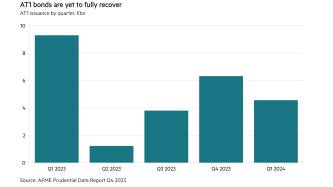Q. Malta’s recession was shorter and shallower than the eurozone average, and its gross domestic product (GDP) growth rate for 2011 is forecast to be higher. What are the strengths of Malta’s economy, and its weaknesses?
A. The global economic crisis has shown that the Maltese economy is quite resilient to external shocks. This primarily reflects its diversification into high value-added activities such as pharmaceuticals, aircraft maintenance and financial services. This trend, which is ongoing, has been possible because of heavy investment in education and training programmes, and the adaptability of the workforce. Political and economic stability, sound fundamentals and policy predictability, and membership of the euro area, reflected in a good credit rating, are other strengths.
And yet, the share of investment in GDP is still not high enough and this partly explains the slow growth in productivity. This is compounded by other supply-side constraints such as the insufficient investment in innovation, relatively low educational attainment levels and the low employment rate. Also, the domestic market is not large enough to prevent elements of monopoly power in some sectors, resulting in higher costs and consequent loss in competitiveness. Finally, excessive reliance by domestic investors on the property market has created a misallocation of resources, especially of financial capital and land.
Q. How healthy is the country’s financial sector?
A. Back in 2003, an International Monetary Fund (IMF) and World Bank Financial Sector Assessment Programme (FSAP) found that Malta’s financial sector was healthy and well supervised, with a comprehensive legal framework and strong adherence to most international standards and codes. In January 2011, an independent follow-up audit found a further, significant improvement in compliance. The latest World Economic Forum Global Competitiveness Index ranks Malta’s financial market development in 11th place in the world.
The sector is growing rapidly into new areas, but banks – from 12 countries – still dominate. The domestically oriented banks maintain capital and liquidity ratios well above the regulatory minimum and their resilience is confirmed by stress-test results. In 2010, customer deposits grew faster than loans and the return on equity averaged 13%. The internationally oriented banks are backed by high-quality capital and are controlled by large cross-border parents.
The funds industry, however, has been the fastest-growing sector since 2008, with investment service providers, fund administrators and custodians, investment management companies and collective investment schemes leading the way, many having re-domiciled from other jurisdictions.
In the insurance industry, the number of managed reinsurers and cells in protected cell companies, as well as assets under management, have doubled since 2008. And there are now 13 insurance managers and 10 captive insurance or affiliated insurance companies operating from Malta.
Q. What measures have been taken to maintain the health of the financial sector?
A. A rigorous but non-intrusive regulatory regime based on international best practice combined with easy access to the single regulator have given Malta a good name in this field. Other contributory factors are a legal framework based on common and civil law, 55 double-taxation treaties and a competitive fiscal regime, and membership of the euro area.
The availability of qualified professionals at competitive salaries, reasonable office accommodation costs and good air and information and communications technology connections complement the package. Malta’s two-centuries-old tradition of commercial banking based on a conservative funding model, in which loans are entirely financed by retail deposits, provides an additional source of comfort.
Q. What are the sector’s weaknesses? For example, many firms are becoming concerned about a future shortage of professional workers. What can be done about this?
A. Rapid growth in any sector can easily give rise to bottlenecks and areas of weakness. With regard to staff availability, both the specialised educational institutions and the university are responding to the growing demand with new, often tailor-made courses.
As for the high exposure of the banks to the real-estate sector, both in the form of loans and collateral held against them, they are being encouraged to increase provisions further in view of the recent increase in corporate non-performing loans. Loan-to-value ratios are not excessive, however, averaging 72% and 62% for residential and commercial property loans, respectively. We are currently strengthening both our micro- and macroprudential supervisory capacities and another IMF/World Bank FSAP will be undertaken next year.












